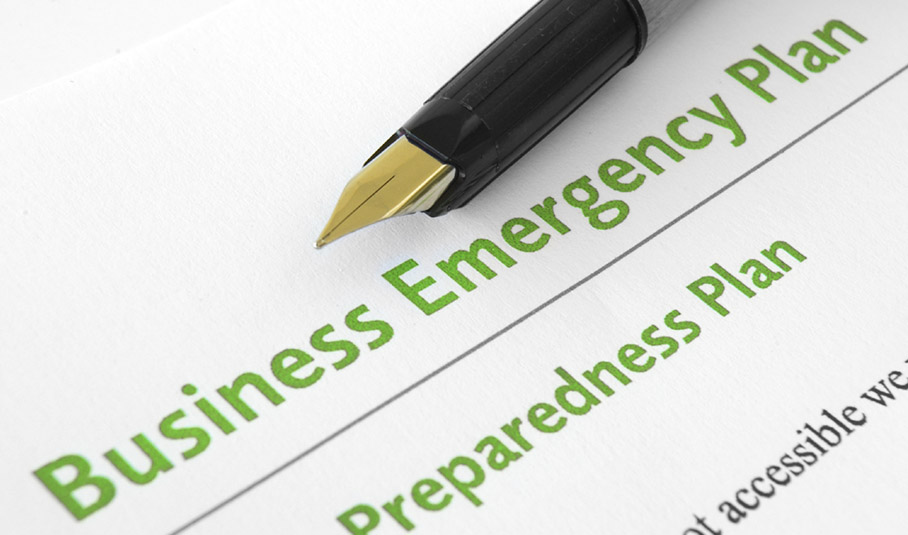
Violence involving firearm use has become a frequent visitor in the workplace. Active shooter situations were once isolated to limited geographic locations. High crime business centers and residential neighborhoods, bank robberies and domestic home situations were the most frequent locations. All that has changed. Around the globe active shooters know no boundaries and respect no institutions. Quite the opposite, what were once viewed as "safe" locations are now frequently shooting crime locations. In addition, the targets and victims of gun incidents have changed.
Schools, hospitals, community centers, houses of worship, shopping malls, movie theaters and business offices now top the list. The victims are no longer "the bad guys shooting each other." Innocent people have become the target of shooting incidents perpetrated by gunman with diverse motivations. Whether the motivation grows from psychological dysfunction, criminal action for financial gain, geo-political or religious fundamentalism, we are all faced with the dilemma: What can I do as an individual to survive an active shooter situation.
Individual Survival
In this article I will share observations from my personal and professional experiences, as well as provide research information gathered from public and private sources. This information should not be viewed as recommended mandates, but rather as knowledge points that the reader as an individual may choose to consider for their personal survival plan.
Live or Die
Professionally, my survival training started in the police academy. Police academy cadets, are taught how to survive personal attacks and active shooting incidents. The officers learn tactical survival skills and are schooled about the use of deadly physical force, specifically when an officer is justified to use his or her firearm against another person to protect the officer's own life or the life of another human being. As I served in my law enforcement career,. my "sixth sense" developed and my reaction to situations when my life was in danger became keener. Staying safe and surviving requires a state of constant awareness.
My defining moment in survival came one Thanksgiving holiday. I was a newly "minted" (promoted) Police Sergeant supervising the midnight shift in a high crime police precinct in the western region of New York State. At about 5 a.m. the police communications center received a call for a hostage/barricaded gunman in a domestic/family dispute. The situation escalated and the police department's hostage negotiator and SWAT team were activated. My precinct commander was the police department's chief hostage negotiator. He summoned me assist him in his negotiations with the suspect. As the negotiation team attempted to establish communications with the suspect via telephone, I was positioned in the yard of the home where the barricaded gunman held the son of a woman who had already escaped the home. The suspect was her boyfriend. Establishing communications with the suspect via telephone had failed and it was decided by the negotiator that I should attempt establishing contact with the suspect by using a bullhorn. Standing behind a vehicle parked in the yard, I called out to the suspect repeatedly to establish a dialogue. After about fifteen minutes of using the bullhorn, I heard a shotgun fire, breaking the silence in the quiet early morning hours of the Thanksgiving holiday.
To this day I do not know how close the shotgun round came to hitting me or if it was aimed at a member of the SWAT team. However, it was at that moment where I learned about the difference between concealment and cover as I changed my position to be directly lined behind the engine block of the vehicle I was standing near. Concealment is a position you take so that you cannot be seen. Cover is the position you take so that you survive! The hostage event had a tragic ending. The gunman shot and killed the little boy and then committed suicide by shooting himself.
The Gift of Fear
Gavin DeBecker, a thought leader in the threat assessment and protection community, coined the phrase and wrote a book titled, The GIFT of FEAR. In summary, his message is that, "fear summons powerful predictive resources that tell us what might come next. It is that which might come next that we fear—what might happen, not what is happening now. "
The question becomes, as individuals in public and private work places, how can we use this "gift of fear" to survive an active shooter event? We carry and use this gift all day, everyday. For men this gift has been called a gut feeling, for woman this gift has been called women's intuition. "However defined, these signals shouldn't be ignored but should be channeled into an individual's survival plan," DeBecker states. "When you accept the survival signal as a welcome message and quickly evaluate the environment or situation, fear stops in an instant. Trusting intuition is the exact opposite of living in fear."
Survival Planning
While some of the below information can be considered for utilization in a hostage situation, an active shooter event is radically different. Most if not all financial institutions have policies and procedures in place for hostage situations relating to branch robberies or other workplace violence events. Active shooter events represent a paradigm shift. In a hostage situation the hostage taker (bad guy) usually demands something in return for release of the hostages. It could be money, freedom of associates or himself or obtaining other assets. In comparison, the active shooter is engaged in committing homicide(s) with the death of intended targets, innocent victims and law enforcement officers. Often suicide or "death by law enforcement" is his desired goal or outcome of the event.
The United States Department of Homeland Security has distributed a guidance manual titled "Active Shooter- How to Respond." Below is an outline of the guidance with added financial institution related comments and points from other relevant sources:
As defined by Department of Homeland Security, an active shooter is "an individual engaged in killing or attempting to kill people in a confined or populated area." For the banking industry this would include bank branches, bank-building offices and leased office space. Awareness must also be elevated in non-traditional banking business locations as well. Banking and Money Services Business (MSB) retail locations in shopping malls, in-store grocery locations, business centers and academic campuses are locations that can also be affected.
In its guide, the U.S. Department of Homeland Security establishes three stages of response during an active shooter incident: Evacuate, Hide Out and Take Action Against the Shooter.
Evacuate
- Call 911 when it is safe to do so
- If you hear what you think are "shots fired" don't wait to verify. Begin your evacuation
- Have a preplanned escape path from your work place. As you attend meetings in other locations always pre-plan, How would I escape?
- Your decision should be a personal one (remember the gift of fear), evacuate regardless whether other people agree or not
- Don't take time to gather your personal belongings, concentrate on getting out
- If you can, help others to escape while also recognizing that grouping may provide an easier target for the gunman
- Keep your hands visible and strictly adhere to instructions by law enforcement officers when they arrive on location
Hide Out
- If you can't evacuate, determine a location where the shooter is less likely to find you. Depending upon the availability of tactically safe locations, not grouping with others to diminish the target value for the suspect might be your desired choice
- Choose a location out of the shooter's view.
- Select a location that provides protection, for example an office with a door that locks
- Consider using business environment contents as safety barriers. Desks, copiers, wall units or any obstructions that would affect the penetration of a bullet could be the difference between death and survival
- Choose a location that you can move from as the situation evolves and changes
- Blockade your location to restrict entry by the gunman
- When hiding remain quiet and disable noise on cell phones. Detection by the suspect could result in death. Remain calm, avoid panic and encourage others with you to do the same
- Remember concealment and cover
Taking Action Against the Shooter—The Last Resort
- If and when your life is in imminent danger your decision may be to take aggressive action against the shooter. Be committed to winning
- Improvise weapons out of common office contents. Use a fire extinguisher or fire hose, throw items, and attack with sharp objects or spray cleaning chemicals. The bottom line is choose to survive; your aggressive action can save your life!
- Commit to your actions; use all your skills in combination with other people that are with you. This is a time to recognize your strengths and weakness and the attributes afforded by others
Law Enforcement Response
- Initial responding law enforcement officers as well as the second wave of responding law enforcement assets (SWAT, Emergency Task Forces) have the end goal of neutralizing the gunman
- While capture is desired, the officers are justified in killing the suspect in an active shooter incident
- With the expectation of exchange of gunfire it is extremely important not to impede the actions of the officers
- Listen and respond exactly to the directions and orders given by the officers. Non-compliance may cost you your life
- Always keep your hands visible. Remember the officers may not have full information about the suspect. Don't be confused with the actual suspect
- The first responding police officers will probably not stop to render first aid or provide comfort to shooting victims. The top law enforcement priority during this stage of the event is to neutralize the threat by stopping the actions of the gunman
- It may take a considerable amount of time for law enforcement to search and clear an active shooter scene. Be patient, stay in place and when in contact with the police officers listen to orders and directions
Related Survival Considerations
When developing your plan and reacting to a situation it is important to consider the complexity of threat situations. The following are elements for consideration:
- Your plan should include not only your workplace but alternative business meeting locations as well your everyday life environment
- When evacuating an active shooter location, evaluate if predetermined staging areas or triage meetings areas are safe in reflection of the specific shooting incident
- Be aware of second or third events. Gunman and their associates have been known to stage second or third events in the proximity of the first attack. They do this to harm and kill innocent people as well as responding law enforcement and other first responder individuals
- When safe and able, communicate with law enforcement to update them with intelligence information that will help resolve the incident
Live!
Regardless of the region of the world, or form of government of our countries, violence and specifically gun violence has become a universal issue. Often the gunman acts alone or with another associate and the result is universally the same, innocent people have their lives cut short. Victims are young and old, fathers, mothers, daughters and sons, brothers and sisters, political and religious leaders. In some instances, regardless of response actions by the victims, death was inevitable because of the actions of the gunman. We are all witnesses to these tragedies. However, in other situations performing just one of the above actions mentioned may save a life and that life may be your own.
Robert A Goldfinger, CAMS, CFS, president NominoData rgoldfinger@nominodata.com
The ideas and opinions expressed in this article are solely those of the author and do not represent ACAMS, ACAMS Today or its affiliates.










